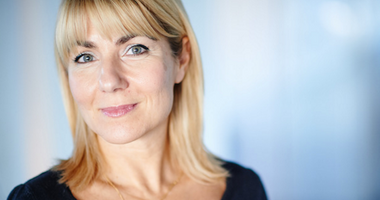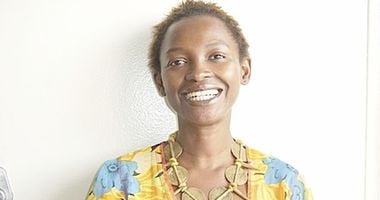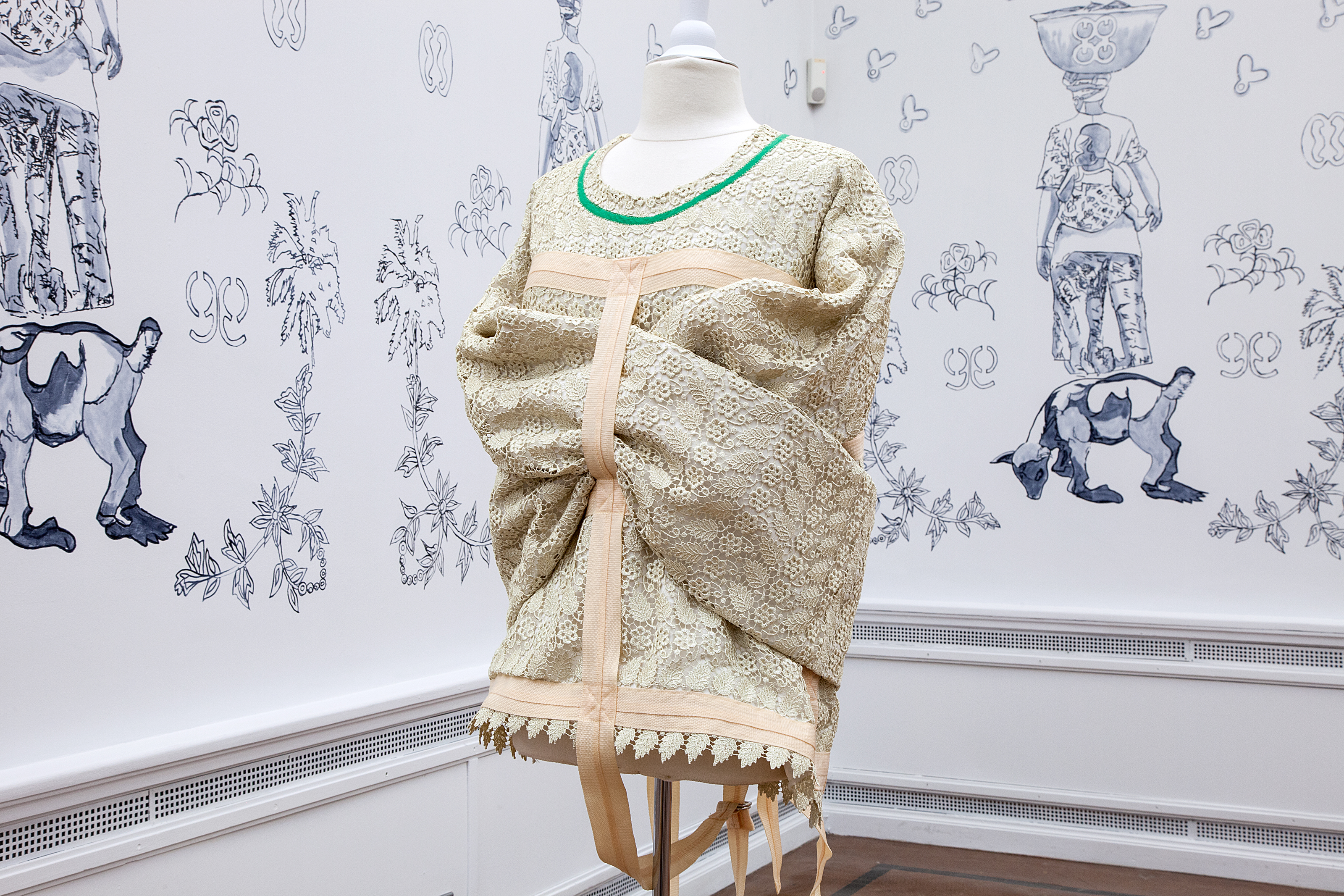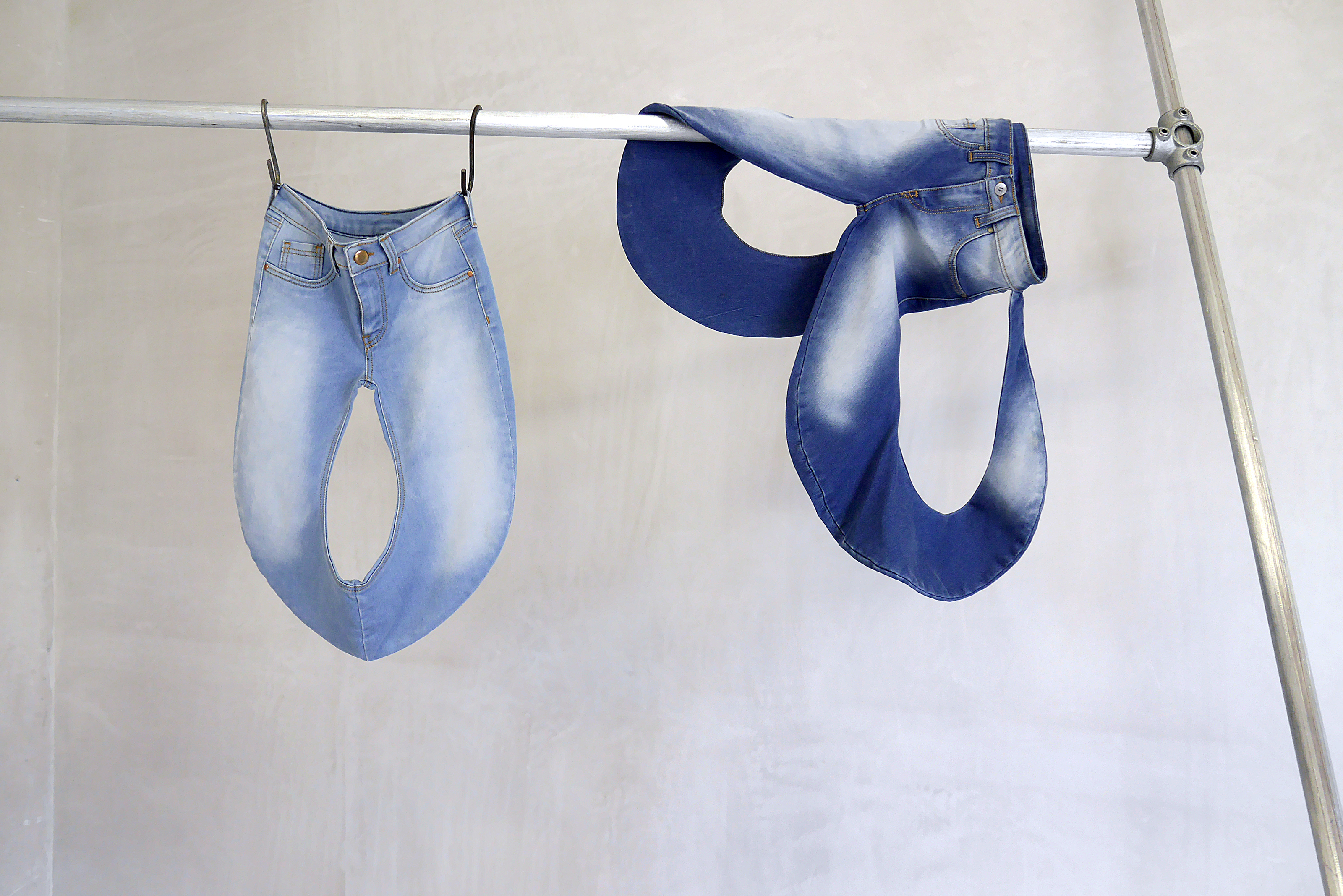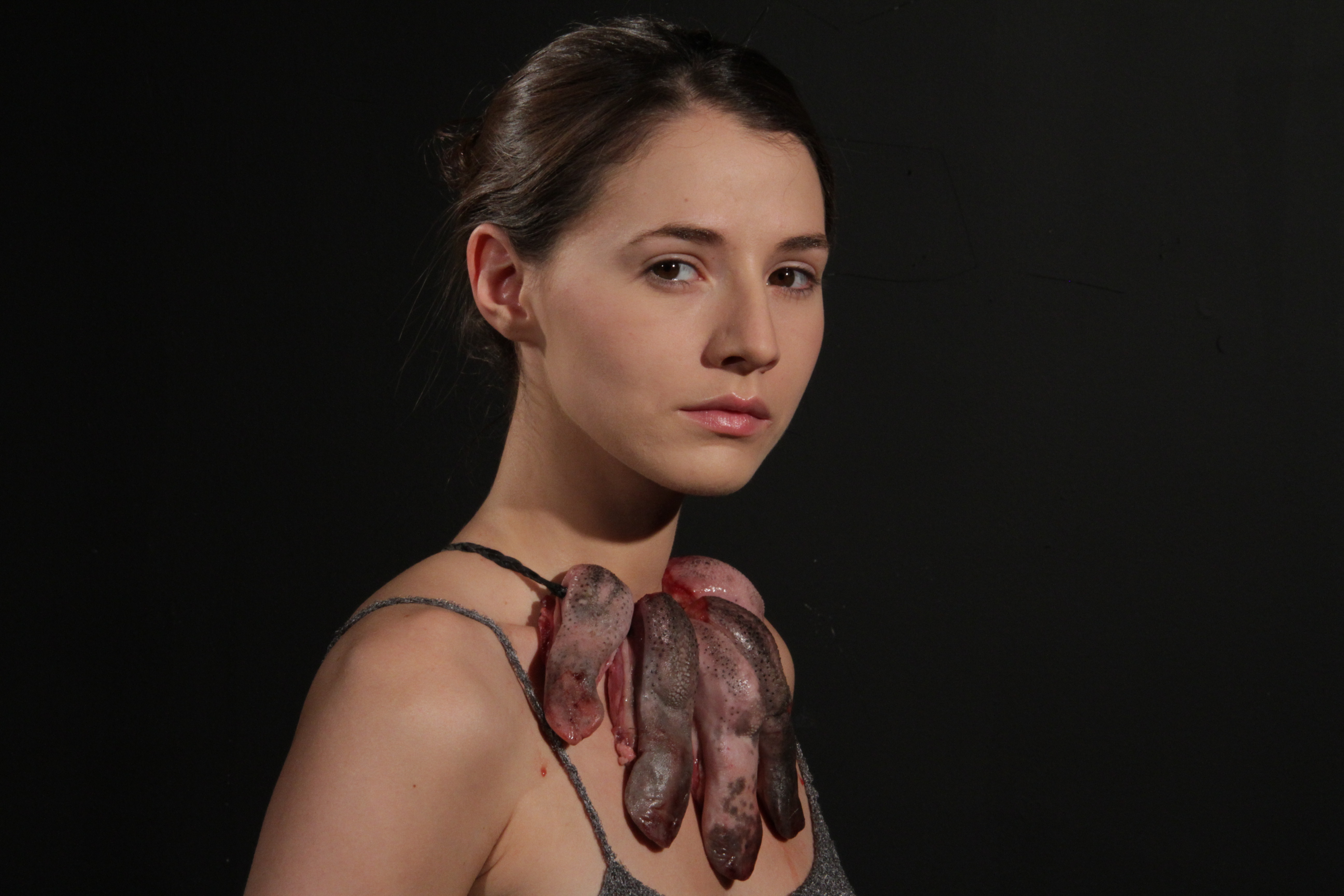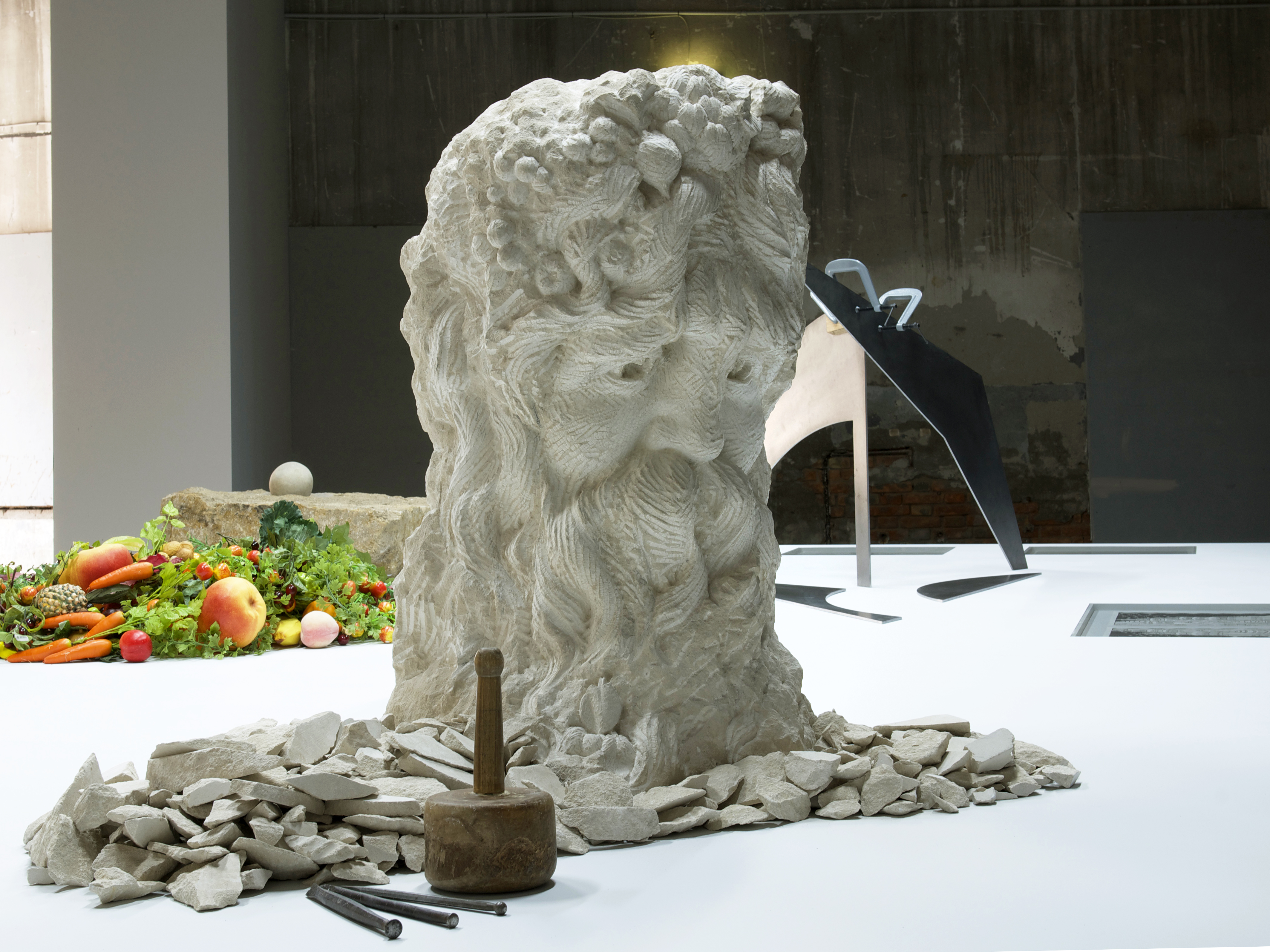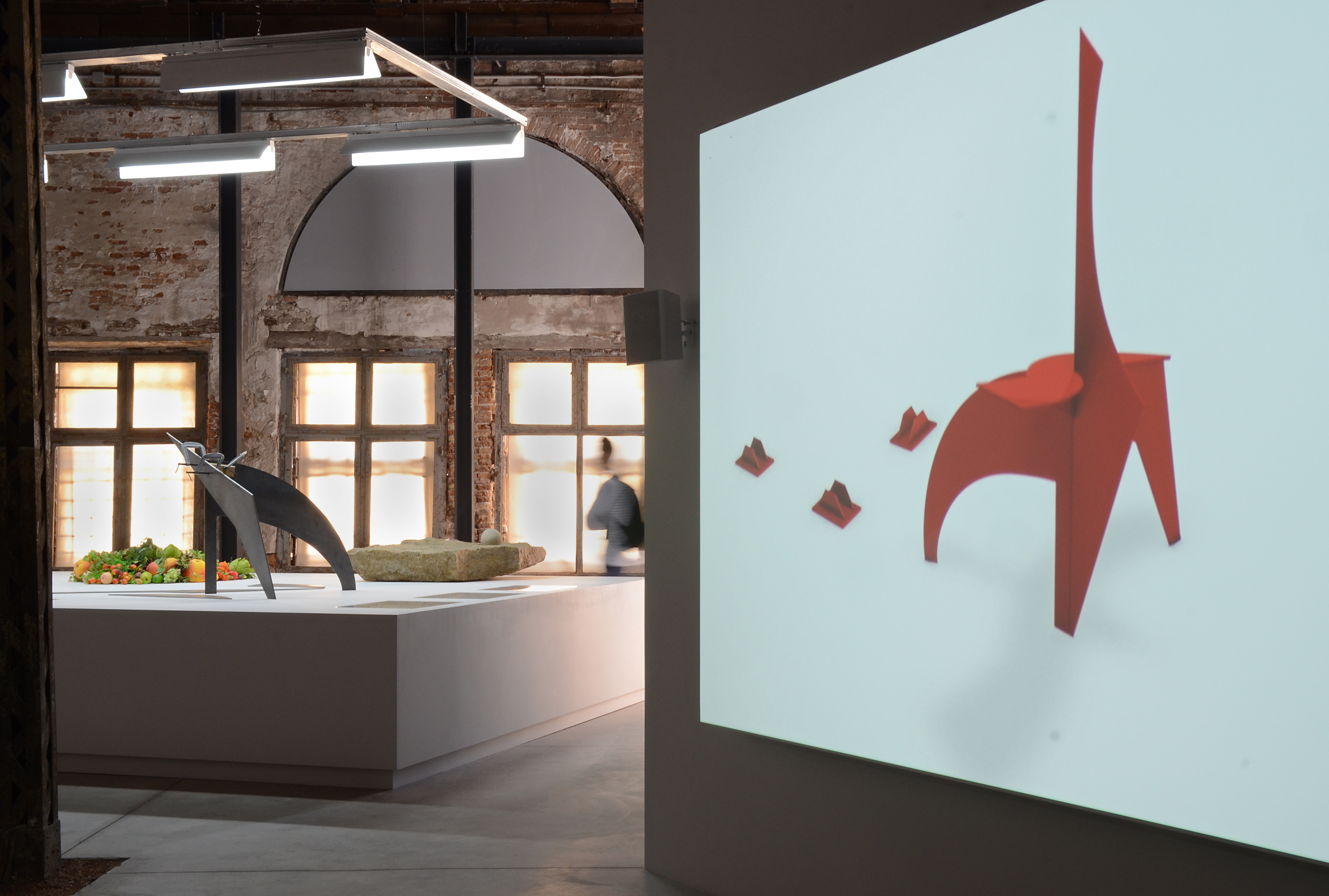Woodrow Kernohan
Image: Woodrow Kernohan. Courtesy EVA International.
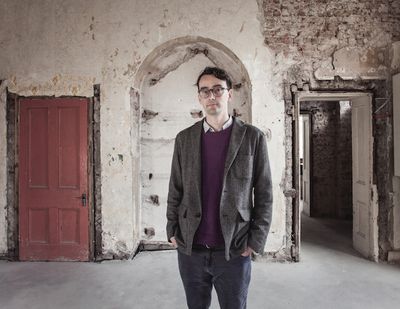
Image: Woodrow Kernohan. Courtesy EVA International.
Woodrow Kernohan is the director of EVA International, an annual event established in 1977 by Limerick-based artists and academics that became known in 2011 as Ireland's biennial, when the exhibition became a once every two-year affair.
This year's edition, Still (the) Barbarians, is curated by Koyo Kouoh, and coincides with the centenary of the Easter Rising, an armed insurrection against British rule. The insurrection was followed by the outbreak of the Irish War of Independence in 1919, which ended with the proclamation of the Irish Free State in 1922. The exhibition involves some 50 artists from 23 countries, including Michael Joo and Liam Gillick both offering strong, site specific interventions at the Sailor's House and Mother Macs respectively, being two out of the six exhibition locations.
Borrowing from the exhibition statement, the show intends 'to draw a concentric artistic and political cartography, mapping the conflations and confines of the global post-colonial typology with Ireland as its central starting point'.
In this conversation with Kernohan—an artist and curator who previously co-directed Brighton Photo Fringe, and more recently curated Sean Lynch's Adventure: Capital at the Irish Pavilion at the 56th Venice Biennale—he discusses Still (the Barbarians) and EVA International, we also discuss his work on Adventure: Capital, currently touring Ireland (opening at the Royal Hibernian Academy, Dublin, on 7 July 2016, with a future tour in the US scheduled thereafter.
SBHow did you become involved with EVA International as a director, and how did your background as not only an artist, but as a co-director of Brighton Photo Fringe, co-director of Permanent Gallery and Bookshop, and Exhibitions Curator at The Regency Town House, inform your approach to the role?
WKMy first encounter with EVA International was as an artist applying to the open call and following the programmes developed by guest curators like such as Rosa Martínez (2000), Salah M. Hassan (2001), Zdenka Badovinac (2004), Dan Cameron (2005), Katerina Gregos (2006), and Hou Hanru (2008). At the same time, I was working with various artist-run organisations where we were creating opportunities for artists to develop new projects, undertake residencies, network, and of course make exhibitions. Placing the artist at the core of EVA International and what we do is very important to me. Artists inform the organisation and play an integral role by being board members, advisors, and part of the biennial team.
In my previous roles I often worked outside of the gallery—developing The Regency Town House (a Georgian house in the middle of restoration) as a site for contemporary art exhibitions, and transforming an empty department store into a temporary venue for both Brighton Photo Fringe and Brighton Photo Biennial. These experiences outside of the gallery, and working within the fabric of the city, are intrinsic to my curatorial practice, as well as my approach and vision for EVA International. For this year's biennial, this has translated into the transformation of the disused Cleeve's Condensed Milk Factory into a temporary venue for 26 artists' projects, and the site-sensitive reanimation of The Sailor's Home by artist Michael Joo.
SBWhat is your relationship to the EVA International's history, and how did it influence the way you position the exhibition as an international biennial instead of an annual event?
WKEVA international was founded in 1977 by artists and has a rich history with an extraordinary alumni of over 2,000 artists and 40 guest curators from across the world, who created works and exhibitions specifically for the city. This history is what drew me to Limerick, and overseeing the organisation's transformation has been an incredible opportunity. The change from an annual exhibition to a biennial has been a sea change, and has offered huge scope for reimagining, growing, and developing the organisation. Irish curator Annie Fletcher, who is based in the Netherlands, was the first biennial curator, and she created an essential bridge from the previous annual exhibitions with After the Future in 2012.
SBIn terms of the 2016 edition, I wonder if you could talk about the importance of this particular year, given it marks the centenary of the 1916 Easter Uprising, and the challenges of putting on an exhibition that dealt with Ireland's colonial history?
WKThe 1916 Easter Rising was a flashpoint in Ireland's struggle for independence from British colonial rule, and responding to the context of the centenary was part of the invitation to Koyo Kouoh. EVA International 2016 and Koyo's project Still (the) Barbarians have provided an opportunity within the national celebrations to explore this history, highlight corresponding colonial and postcolonial narratives, and draw parallels to other newly independent countries.
Ireland's colonial past remains a contested history, particularly in relation to the North, which can still be considered as occupied. Working with artists and voices from across the island of Ireland has been as important to Still (the) Barbarians as working with artists from around the world. Artist Alan Phelan's Leopoldville (2016) at the Cleeve's Condensed Milk Factory that explores 1916 martyr Roger Casement's humanitarian work in the Congo, public disgrace for homosexuality, trial, and subsequent execution for treason, is particularly pertinent within the context of current humanitarian crises and the recent marriage equality referendum in the Republic of Ireland, but continued marriage inequality in the North.
SBHow has the exhibition been received by visitors, local and foreign alike?
WKStill (the) Barbarians has struck a chord with both Irish and international visitors, perhaps due to the expansive nature of the exhibition and the range of voices present. There has also been a significant critical engagement with the programme, with extensive coverage across print, online, and media—locally, nationally and internationally.
Each of the six biennial venues is paced differently and the exhibition is highly responsive to each location, associated audiences and history within the city. For example, Limerick City Gallery of Art, the city's municipal gallery, holds a constellation of works that reflect upon the city, its history and the gallery's collection, while also creating entry points for local audiences who may be less familiar with contemporary art.
Godfried Donkor's Rebel Madonna Lace Collection (2016) explores the history of Limerick Lace, lacemaking's indexical relation to plantations, and current fashion for lace in Ghana; Charles Lim Yi Yong's Stealing the Trapeze (2016) eloquently brings together the western appropriation of the sailing trapeze with its Southeast Asian origins; and Abdoulaye Konaté's Le Papillion Bleu (2016) celebrates the metamorphosis and fragility of new postcolonial countries through his exquisite textile butterfly installation.
The Cleeve's Condensed Milk Factory is the largest and most intensive biennial venue with time-based and immersive installations including Alice Maher's disquieting and passionate video installation Cassandra's Necklace (2012), Alfredo Jaar's migratory The Cloud (2015), and Jeremy Hutchison's indigo mine, Fabrications (2013-6), superimposed onto the landscape of Palestine.
To conclude the biennial programme we will be holding a two-day colloquium in July that reflects on Still (the) Barbarians, the centenary, and the societal, environmental and psychological legacies of postcolonialism.
SBHow would you say the 2016 edition of EVA fits into the broader history of EVA International, and recent editions curated by Bassam Al Baroni and Salah M. Hassan?
WKEVA International has worked with highly esteemed international guest curators from across the world. As well as introducing Irish audiences to international art and artists, we aim to introduce the guest curators to Irish art and artists. Through approaching guest curators directly and inviting them to develop a relationship with Limerick and the biennial, we also aim to create a dialogue between past, present and future curators. Working with Koyo Kouoh (Cameroon/Senegal), Bassam El Baroni (Egypt) and Salah M. Hassan (Sudan) created links with North Africa and brought many artists to Ireland for the first time. I was very privileged to meet Koyo Kouoh with Salah M. Hassan early in our conversations about EVA International, and I think Salah's positive experience of working in Ireland contributed towards Koyo accepting my invitation.
SBHow might the 2016 edition of EVA International reflect the future aims of the biennial, and how it intends to position itself within the global network of biennial exhibitions?
WKEVA International is Ireland's biennial of contemporary art, and is the only of its kind in Ireland. This is recognised by artists and arts professionals nationally and, increasingly, internationally. Strong partnerships have been made locally, nationally and internationally for Still (the) Barbarians and this is something that I hope to continue and grow, cultivating EVA International's relationships within a global context.
There are many unique aspects to EVA International and working in Limerick, as guest curators and artists will attest. The scale of the organisation, city, and the country, offers the opportunity for strong personal exchange and linking artists and curators with experts and potential collaborators. EVA International operates on a proportionately low budget and we are working hard to improve this. Since 2011, a small and dedicated permanent team has developed and increasingly we have been able to commission new projects specifically for each new edition. EVA International is a member of the IBA—International Biennial Association,—and though this we are actively seeking partnerships with other members towards collaborations and co-productions.
SBYou were also curator of the Irish Pavilion at the 56th Venice Biennale, curated by Okwui Enwezor. Could you talk about the proposal you made, the exhibition that was produced as a result, and how this fit into the wider frame of Enwezor's Venice?
WKFor Ireland at Venice 2015, I worked closely with artist Sean Lynch to develop his new project Adventure: Capital for the Artiglierie of the Arsenale. Similarly to All the World's Futures and the colonial architecture of the Giardini, Adventure: Capital was instigated by the discovery of the image of Greek river gods on the back of Irish Free State banknotes. These river gods are etchings taken from the carvings that adorn the Custom House in Dublin, an iconic architectural symbol of colonial power.
Adventure: Capital uses the figure of a wandering artist in dialogue with his surroundings and objects, to weave a story that follows the flow of labour, goods, and ideology, echoing Ireland's colonial past and history of migration. Sean's project proposes the artist as an interlocutor and the artwork—in the forms of a proposed carving of footballer George Best as a river god for Belfast City Airport—as monument and gift.
Adventure: Capital is a looping and layered story that approaches Das Kapital with a sense of quizzical humour, and in the context of the 56th Venice Biennale, brought Ireland's underrepresented colonial past into the frame of All the World's Futures. Interestingly, in relation to the flow of labour, goods,
SBI asked the previous question with Koyo Kouoh's positioning of Ireland as the first British colony in mind, and the overall statement Enwezor was making at Venice, which was a consideration of 'All The World's Futures' beyond the western-centric frame.
WKThis is a very pertinent question, especially within the centenary year of the 1916 Easter Rising. Ireland is one of very few western countries that was colonised, and through Still (the) Barbarians, EVA International 2016 has been a platform to explore this past and continuing legacy.
Koyo Kouoh was able to bring an African perspective to Ireland's history and present, and she identified a number of symptoms that are similar to other postcolonial countries, particularly concerning language, the church, place names, public space, and the state.
A key development for this edition of EVA International has been to produce a bilingual catalogue in both Irish and English. The 1916 rebels were part of the Gaelic Revival generation and promotion of the Irish language was an integral part of the movement towards and post independence. Alongside addressing the colonisation of language, most international visitors' unfamiliarity with the Irish language also highlights the specifics of being in Ireland within the predominantly Anglophone artworld.
SBFrom your perspective, how do you mediate the tensions that resonate within the space of art across all levels, from the local to the global? In other words, how do you balance the various expectations placed on art by the different communities you serve not only as director of EVA International, but as a curator and as an artist?
WKAs a biennial, EVA International has Limerick at its core, and this relationship with the people, city and region are integral to its being. Each of the biennial venues is sensitive to its location, history and audiences. Limerick City Gallery of Art is the home of the biennial and introduces Still (the) Barbarians to audiences from various communities and levels of experience.
The Cleeve's Condensed Milk Factory is a site of architectural significance that the public can only access during the biennial, and the dynamic and immersive installations reanimate this otherwise dormant site. Limerick is a city with economic and social challenges, and it is extremely important that we open the biennial to local audiences who are less comfortable in a gallery or museum setting.
The Young EVA programme works with younger audiences to encourage active engagement and questioning of the biennial and artworks, through participative workshops with a philosopher, education curator and the biennial artists. 'And then...', Liam Gillick's spoken word film festival, takes place every Thursday night throughout the biennial in Mother Macs pub.
During the opening days, Liam was the host for the events and the participating audience were largely national and international press, arts professionals, artists and collectors. What has been curious to see, through the course of the exhibition, has been the evolution of this participating audience to becoming the pub's locals and audiences who would not consider going to the biennial otherwise. Opening the biennial to this variety of local audiences is a challenging and rewarding process.
SBIf you had any advice for curators or artists working today, what would it be?
WKMy professional experience and practice have led me to understand that the most positive ways of working come through strong and meaningful dialogue, sharing ideas, and developing partnerships and collaboration at all scales—from the local, national to international. Each individual curators' and artists' trajectory is of course unique and specific to their practice and circumstance, but through being generous and open, opportunities and synergies emerge. —[O]



